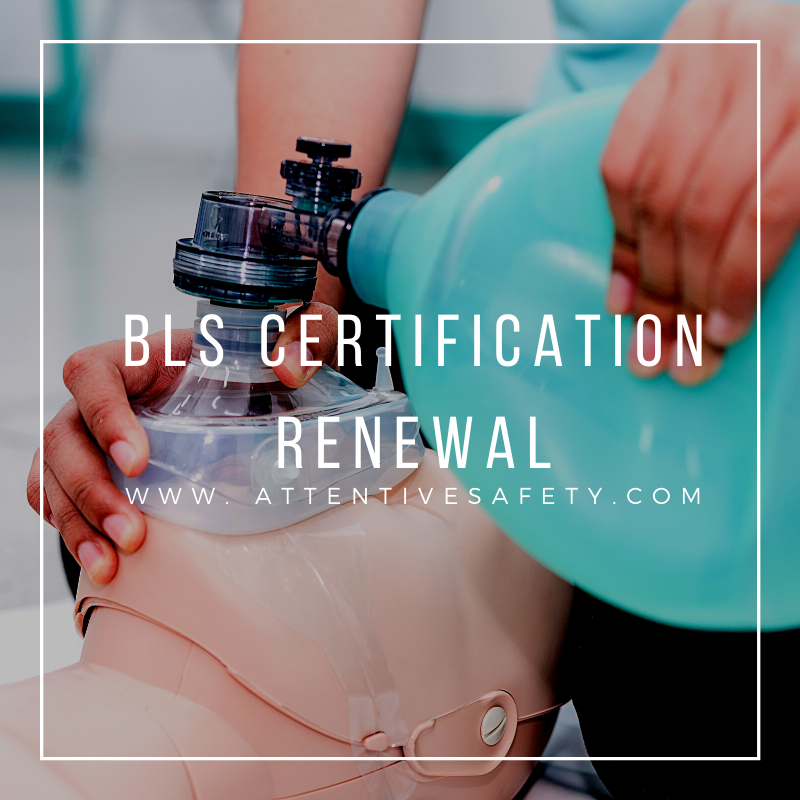
Table of Contents:
- Introduction
- Overview of BLS Guidelines
- Key Changes in Recent BLS Guidelines
- Implications for Healthcare Providers
- Tips for Successfully Renewing Your BLS Certification
- Bottom Line
Introduction
Staying updated with Basic Life Support (BLS) guidelines is crucial, especially if you’re in the healthcare field or any profession where you might need to perform CPR. These guidelines are not just rules; they’re based on the latest research and best practices in emergency care. BLS renewal ensures you’re equipped with the most current techniques to potentially save a life.
Whether you’re a healthcare professional or someone who’s thinking about renewing your BLS certification, understanding the key changes in the latest guidelines is essential. Let us go through the latest BLS guidelines andany why renewal is important in the next sections.
Overview of BLS Guidelines
BLS guidelines have evolved over the years to improve the effectiveness of CPR and other emergency procedures. These guidelines set the standard for how to perform lifesaving techniques like chest compressions, rescue breaths, and using an Automated External Defibrillator (AED). Regularly renewing your BLS certification ensures that you are ready to act effectively in an emergency.
Key Changes in Recent BLS Guidelines
The latest BLS guidelines have introduced several important updates aimed at improving patient outcomes. Here’s a breakdown of the most significant changes:
- Updated CPR Techniques
- Emphasis on High-Quality Chest Compressions: The new guidelines put even more focus on the quality of chest compressions. High-quality compressions mean pushing hard and fast at the correct depth and speed. Research shows that high-quality compressions and timely CPR can double or even triple a person’s chance of survival.
- Changes in Compression-to-Ventilation Ratios: While the basic ratio of 30 compressions to 2 breaths remains unchanged for adults, there are subtle changes in how compressions should be delivered. The goal is to minimize interruptions in chest compressions to maintain blood flow.
- Hand Positioning and Depth of Compressions: The updated guidelines emphasize the correct hand placement and a compression depth of at least 2 inches in adults. This ensures that compressions are effective in circulating blood to vital organs.
- New Recommendations for AED Use
- Faster Integration with CPR: The guidelines now stress the importance of using an AED as soon as it’s available. Studies have shown that each minute of delay in using an AED can reduce the effectiveness by 10%.
- Updated AED Protocols: New protocols include guidance on how to minimize delays between shocks and compressions, ensuring that the heart has the best chance to start beating effectively again.
- Airway Management Updates
- Simplified Airway Techniques: The new guidelines simplify the approach to opening the airway, making it easier to remember and perform under stress. Effective airway management is critical, as it ensures oxygen gets to the lungs and, ultimately, the brain.
- Guidance on Advanced Airway Devices: For healthcare providers trained in using advanced airway devices, the guidelines now include updated recommendations on when and how to use these tools effectively.
- Revised Guidelines for Specific Populations
- Pediatric Considerations: Children are not just small adults, and the new guidelines reflect this. For example, the depth of chest compressions and the use of AEDs in pediatric patients have been updated to improve outcomes in younger age groups.
- Special Considerations for Elderly Patients: The elderly may have fragile bones or underlying conditions that require a gentler approach to CPR. The new guidelines offer tailored advice to address these concerns.
Impact on BLS Renewal Courses
If you’re planning to renew your BLS certification, you’ll notice that these changes have been integrated into the course content. Here’s how:
- Course Content Updates: The latest BLS renewal courses now cover these new guidelines in detail. You’ll learn not only what the changes are but also why they were made and how to apply them in real-life situations.
- Training Methodology: Expect to see new training tools and methods designed to reinforce these updates. For example, some courses now include video demonstrations and hands-on practice that focus on the updated CPR techniques and AED protocols.
- Examination Changes: The practical and written exams in BLS renewal courses have also been adjusted to reflect the new guidelines. You’ll be tested on the updated techniques and protocols to ensure you’re fully prepared.
Implications for Healthcare Providers
These BLS guideline updates are straightforward but essential for your role. Here’s what you need to know:
- Why These Changes Matter: The updates are based on the latest research. Following them means you’re using the best methods to save lives.
- Real-World Impact: In an emergency, small changes like continuous chest compressions can make a big difference in effectiveness. These updates help you adapt quickly and work better with your team.
- Staying Ahead: Being up-to-date shows your commitment to providing the best care. It also boosts your confidence when you’re faced with critical situations.
- Legal and Professional Importance: Not following the latest guidelines can have serious consequences. Staying informed helps you avoid risks and ensures you’re doing your job right.
- Ongoing Learning: The medical field constantly evolves. These updates remind you that learning never stops and keeping up with changes keeps you ready for anything.
Tips for Successfully Renewing Your BLS Certification
Renewing your BLS certification doesn’t have to be stressful. Here are some tips to help you succeed:
- Preparation Strategies: Start by reviewing the new guidelines before your course. There are plenty of online resources, including videos and articles, that can help you get familiar with the updates.
- Choosing the Right Course: Whether you prefer an online or in-person course, make sure it covers the latest BLS guidelines. Look for courses that offer plenty of hands-on practice, as this will help you retain what you’ve learned.
- Staying Current: After you renew your certification, make a habit of checking for any future updates to the BLS guidelines. Subscribing to newsletters from professional organizations or following relevant social media channels can help you stay informed.
Bottom Line
BLS renewal is more than just a requirement; it’s an opportunity to refine your skills and stay updated with the latest in life-saving techniques. The recent changes to the BLS guidelines are designed to improve outcomes and ensure that every person performing CPR is equipped with the best possible knowledge. By staying informed and renewing your certification regularly, you’re making a commitment to excellence in emergency care.
Write and Win: Participate in Creative writing Contest & International Essay Contest and win fabulous prizes.

